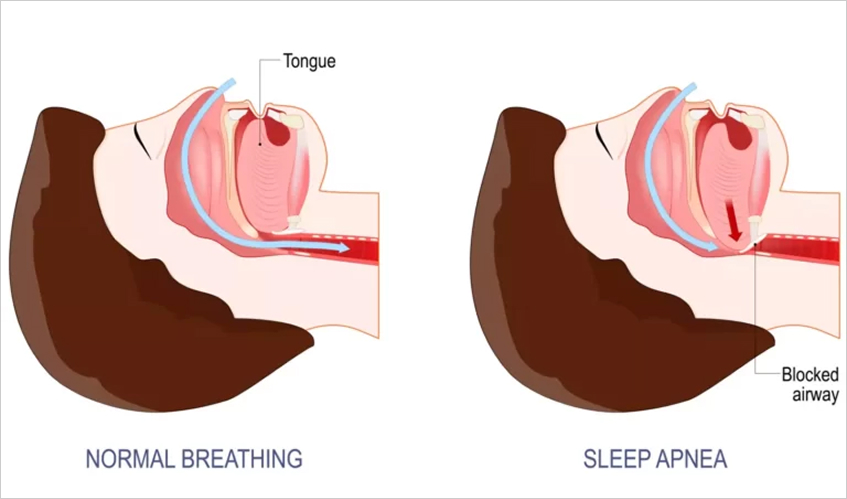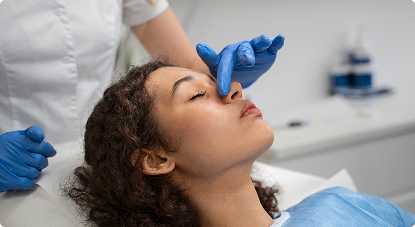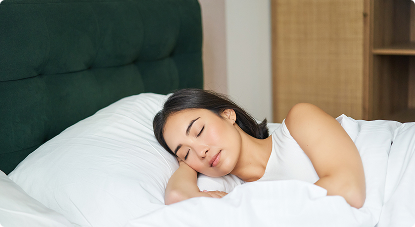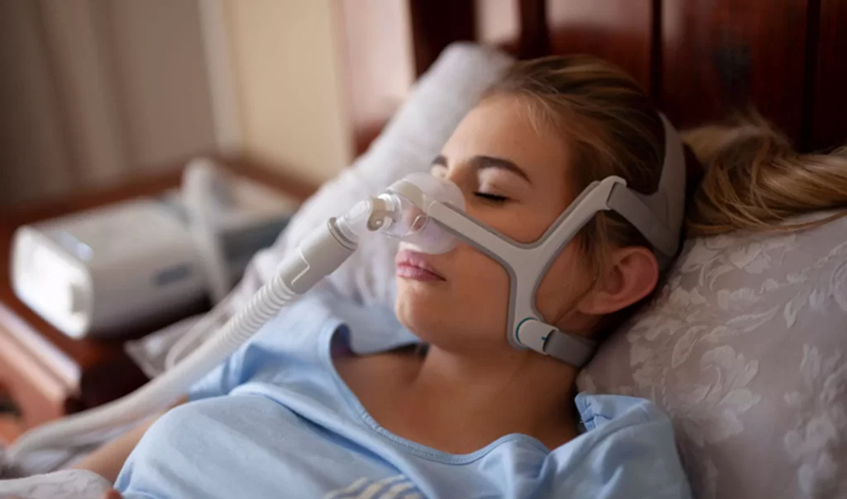Home > Conditions > Sleep Apnea & Snoring Treatment
Snoring Treatment In Singapore
How Common is Snoring Among Adults in Singapore?

What is Snoring and Why Does it Happen?
Snoring occurs when airflow through the mouth and nose is partially blocked during sleep. When awake, the muscles in the throat keep the airway open, but during sleep, these muscles relax. This relaxation may cause the surrounding tissues to narrow or partially collapse the airway.
As air passes through the narrower space, turbulence develops. This causes the soft tissues in the throat to vibrate, producing the sound of snoring. The smaller the airway becomes, the louder or more frequent the snoring may be.
In some cases, the narrowing of the airway can be significant enough to interrupt breathing. When this happens repeatedly during the night, it may indicate a more serious condition such as obstructive sleep apnoea (OSA).
Not everyone who snores has sleep apnoea. Occasional snoring may be harmless, but persistent or loud snoring, especially when accompanied by other symptoms, should be evaluated. A snoring consultation can help determine if the issue is due to simple airway resistance or an underlying condition that requires management.
What Are the Common Symptoms of Snoring?
Loud breathing or noises during sleep
Snoring often presents as noisy breathing, with sounds ranging from mild vibrations to louder, disruptive noises.
Pauses in breathing (possible sleep apnoea)
Snoring may sometimes be accompanied by brief pauses in breathing, which can suggest an underlying condition such as obstructive sleep apnoea.
Daytime fatigue, morning headaches
Interrupted or poor-quality sleep may result in tiredness during the day or waking up with headaches.
Sore throat or dry mouth on waking
Breathing through the mouth at night can leave the throat or mouth dry in the morning.
Disturbed sleep for the partner
Bed partners may notice loud snoring, breathing pauses, or restless sleep patterns.
Occasional nighttime awakenings
Snoring can sometimes cause the individual to wake briefly without realising the cause.
What Causes Snoring?
Diagnosis of snoring involves reviewing symptoms, examining the airway, and, when necessary, conducting further tests to assess for conditions such as sleep apnoea.
Medical history and symptom discussion
The doctor may ask about sleep patterns, daytime tiredness, and lifestyle factors. Standard questionnaires such as the Epworth Sleepiness Scale or the Pittsburgh Sleep Quality Index may be used to assess sleep quality and daytime sleepiness.
Physical examination of nose, throat, and airway
An ENT specialist examines the upper airway for features such as enlarged tonsils, nasal blockage, or structural narrowing.
Nasal endoscopy
A thin flexible scope is used to look inside the nose and throat for obstructions or structural changes. Learn more about nasal endoscopy.
Sleep study (polysomnography)
If sleep apnoea is suspected, a sleep study may be performed in a hospital or sleep laboratory to measure breathing pauses, oxygen levels, and sleep stages.

How is Sleep Apnea Diagnosed in Singapore?
Diagnosing sleep apnea involves a multi-step approach that includes both clinical assessments and sleep studies. The method used often depends on your specific symptoms, physical findings, and overall health profile.

Medical history and symptom discussion
The doctor may ask about sleep patterns, daytime tiredness, and lifestyle factors. Standard questionnaires such as the Epworth Sleepiness Scale or the Pittsburgh Sleep Quality Index may be used to assess sleep quality and daytime sleepiness.

Physical examination of nose, throat, and airway
An ENT specialist examines the upper airway for features such as enlarged tonsils, nasal blockage, or structural narrowing.

Nasal endoscopy
A thin flexible scope is used to look inside the nose and throat for obstructions or structural changes. Learn more about nasal endoscopy.

Sleep study (polysomnography)
If sleep apnoea is suspected, a sleep study may be performed in a hospital or sleep laboratory to measure breathing pauses, oxygen levels, and sleep stages.
What Are the Possible Complications of Snoring?
Snoring is not always harmless. In some cases, it may contribute to broader health or social issues, particularly when linked to sleep apnoea.
Sleep disruption and fatigue
Snoring can cause restless sleep for both the person affected and their partner, leading to poor rest at night.
Reduced concentration at work or school
Daytime tiredness from disrupted sleep may make it harder to focus, affecting performance in daily activities.
Cardiovascular risks if linked to sleep apnoea
When snoring occurs alongside obstructive sleep apnoea, repeated breathing interruptions may place stress on the heart and circulation.
Impact on relationships
Loud or frequent snoring may disturb bed partners and create tension within households.

What Treatment Options Are Available for Snoring in Singapore?
Management of snoring depends on its cause and severity. Options range from lifestyle measures to surgical procedures if structural airway issues are identified.
Non-Surgical Procedures
Lifestyle measures
Weight management, avoiding alcohol before bedtime, and changing sleep position may help reduce snoring.
Medications
Nasal sprays or other treatments may be used to address nasal congestion.
Oral appliances or CPAP
Mandibular advancement devices (MADs) can help reposition the jaw to keep the airway open. In cases linked to sleep apnoea, CPAP therapy may be considered.
Surgery for structural airway issues
Procedures may be suggested when non-surgical methods are not sufficient.
Surgical Procedures
Nasal surgery
Septoplasty may be performed to correct a deviated nasal septum and improve airflow.
Palate surgery
Techniques to reshape or stiffen the soft palate can help reduce tissue vibration.
Tongue base reduction
Removes or reduces tissue at the base of the tongue to prevent airway narrowing.
Inspire therapy
A device implanted under the skin that stimulates airway muscles to remain open during sleep.
Skeletal surgery
Jaw repositioning procedures may be considered in specific cases of severe airway narrowing.
Note: Surgical treatment for snoring should be performed by a certified snoring doctor.
FAQs about Snoring Treatment in Singapore
Can snoring go away on its own?
Occasional snoring may improve with lifestyle changes such as losing weight, avoiding alcohol before bedtime, or changing sleep position. Persistent or loud snoring is less likely to resolve on its own and may need medical evaluation.
When should I see a doctor for snoring?
It is advisable to seek a medical review if snoring is frequent, loud, or accompanied by breathing pauses. An ENT clinic can help identify whether the cause is simple airway resistance or linked to an underlying condition.
Can allergies cause snoring?
Yes. Blocked nasal passages from allergies can make airflow more difficult and increase snoring. For more details, consult a nasal specialist.
Is snoring linked to sleep apnoea?
Loud or persistent snoring can sometimes be a sign of obstructive sleep apnoea. If symptoms such as daytime fatigue or witnessed breathing pauses occur, a sleep apnoea test may be recommended.
Can children snore, and should it be a concern?
Yes. Children may snore due to enlarged tonsils, adenoids, or nasal blockages. Persistent snoring in children should be assessed by a paediatric ENT in Singapore.
What are the non-surgical treatments for snoring?
These may include lifestyle measures such as weight management, nasal sprays for congestion, oral appliances, or CPAP therapy in cases linked with sleep apnoea.
What surgical treatments are available for snoring?
Depending on the cause, surgery may address structural issues in the nose, palate, or throat. Examples include septoplasty, palate surgery, or tongue base reduction.
Is surgery always necessary for snoring?
No. Many people benefit from non-surgical measures first. Surgery is usually considered when snoring is severe, structural problems are present, or other treatments have not been effective.
Table of Content
Snoring Doctor / Specialist in Singapore
If you are experiencing persistent snoring or related symptoms, consider consulting an ENT specialist for an evaluation. Dr Leslie Koh sees patients at Mount Alvernia Hospital.

